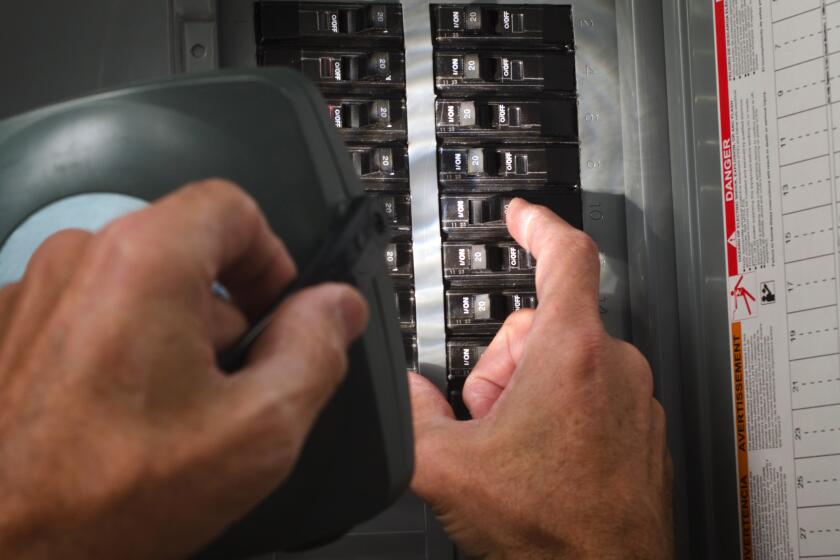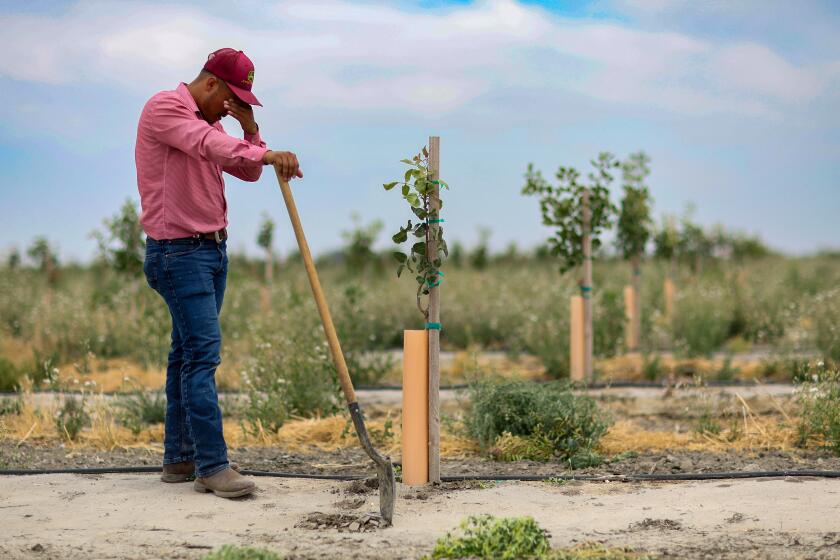So Will We Be Able to Drink It? : WATER WATCH: Somebody has to foot the nitrate cleanup bill
If the state’s drought has done nothing else, it has pointed up the importance of stable underground water supplies that aren’t affected by every change in the weather. In three Southern California counties, these underground supplies, fed by the Santa Ana River, are threatened by nitrates, a pollutant that is especially dangerous to children.
Cleaning up contaminated water and instituting new procedures to see that nitrates don’t get into the water supply in the first place are astronomically expensive. But that is a cost that must be borne if this vital resource is to be preserved.
In the case at hand, nitrates have entered ground water from cow manure, fertilizer used during a century of farming in the region and, in recent decades, 18 sewage plants that have dumped treated water into the river. River water, in turn, replenishes underground reservoirs in Riverside, San Bernardino and Orange counties--reservoirs that provide much of the drinking water for those counties. Already, six of the 19 ground-water basins fed by the river in Riverside and San Bernardino counties are so contaminated by nitrates that they are unusable; five more are threatened. Basins in Orange County will be next--unless drastic measures are taken.
Good sense and federal law mandate that new standards for the river be adopted. The question is: Who will pay the bill? Estimates run as high as half a billion dollars for protecting water in the future and cleaning up supplies that have already been tainted. That money will have to come from higher sewage bills for residents. The Santa Ana Regional Water Quality Board will decide this fall how to divide up the costs.
In coming months, the cities and counties involved will get their chance to comment on the plan, and many will argue that they shouldn’t be held accountable. Agencies in Riverside and San Bernardino counties say it doesn’t seem fair that the new standards will primarily benefit Orange County, whose underground reservoirs receive millions of acre-feet a year from the river’s Prado Dam. Because the pollution occurs elsewhere, Orange County won’t have to pay for the cleanup.
But water supplies, as the drought has painfully taught us, are a shared commodity. If one area’s water dries up or becomes unusable because of pollution, supplies must come from other areas, or even other states. And the cost of clean water never will be any lower.
The contamination of the Santa Ana River by sewage treatment plants must be stopped, and those areas that are responsible inevitably must pay for it.
More to Read
Sign up for Essential California
The most important California stories and recommendations in your inbox every morning.
You may occasionally receive promotional content from the Los Angeles Times.






